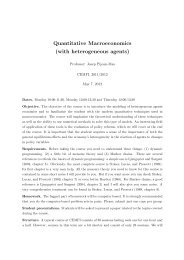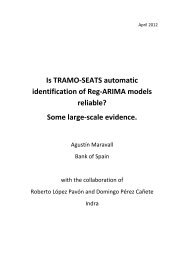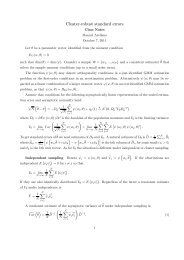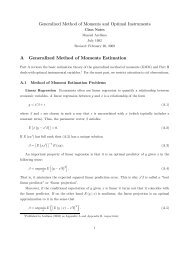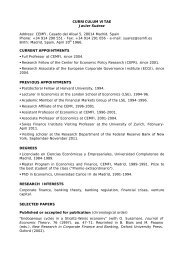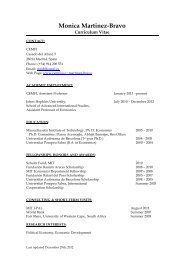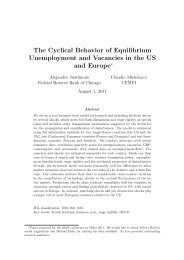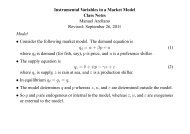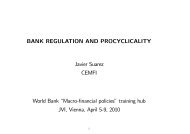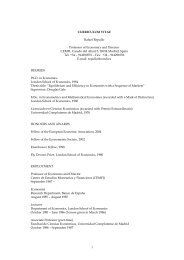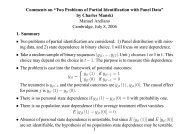Binary Models with Endogenous Explanatory Variables 1 ... - Cemfi
Binary Models with Endogenous Explanatory Variables 1 ... - Cemfi
Binary Models with Endogenous Explanatory Variables 1 ... - Cemfi
You also want an ePaper? Increase the reach of your titles
YUMPU automatically turns print PDFs into web optimized ePapers that Google loves.
The nice thing about θLAT E is that it is identified from the Wald formula in the absence of joint<br />
normality. In fact, it does not even require the index model assumption for Y (1) and Y (0). Sowedo<br />
not need monotonicity in the relationship between Y and X. The relevance of θLAT E partly depends<br />
on how large the probability of compliers is, and partly on its policy relevance.<br />
We have<br />
θAT E = θLAT E Pr (compliers)+E [Y (1) − Y (0) | never-takers]Pr(never-takers)<br />
+E [Y (1) − Y (0) | always-takers]Pr(always-takers) .<br />
There is a connection <strong>with</strong> fixed-effects identification in binary-choice panel data models.<br />
Two related references are J. Angrist (2001, JBES, 19, 2—16) on LDV models, and Ed Vytlacil on<br />
the identification content of enforcing the index model assumption on Y (1) and Y (0).<br />
References<br />
[1] Blundell, R. and J. L. Powell (2003): “Endogeneity in Nonparametric and Semiparametric Regression<br />
<strong>Models</strong>”. In: M. Dewatripont, L. P. Hansen, and S. J. Turnovsky (eds.), Advances in<br />
Economics and Econometrics, Eighth World Congress, vol. II, Cambridge University Press.<br />
[2] Imbens, G. W. and J. Angrist (1994): “Identification and Estimation of Local Average Treatment<br />
Effects”, Econometrica, 62, 467-475.<br />
[3] Vytlacil, E. (2002): “Independence, Monotonicity, and Latent Index <strong>Models</strong>: An Equivalence<br />
Result” Econometrica, 70, 331-341.<br />
10



